
Renate Bertelmann at Austrian Pavilion, via Art Observed
As the crowds wound their way over from the crowded halls of the Arsenal, the Giardini, the second section of the Venice Biennale was underway in La Serenissima this morning. Flocks of visitors to the winding paths and green hills of the park, where the long-held exhibition spaces bearing the names of their countries are spread across . The environment gives a well-separated browsing experience, where each artist is provided carte blanche to realize their vision inside the space, often responding to architectural elements or working in direct opposition to the spaces themselves.
The Venice Biennale‘s annual invitations to various nations around the globe serves to offer a counterpoint to the sprawling main exhibition. Presented by individual curators and supported by art institutions back home, the shows offer not only a selection of singular voices from around the globe, but equally a look at the various national discourses of each country’s artistic institutions and infrastructure.
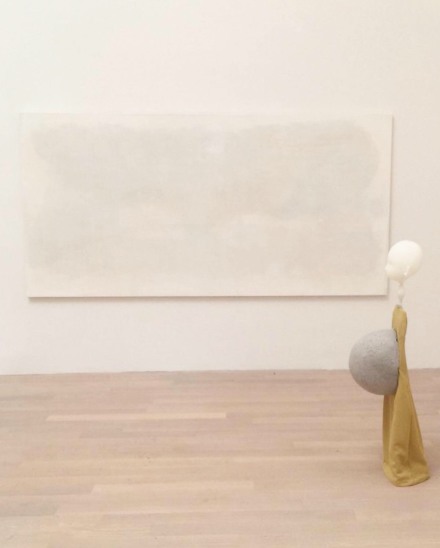
Cathy Wilkes, Untitled (2019), via Art Observed
Cathy Wilkes’s booth at the British Pavilion was an early favorite, a subtle, mysterious arrangement of ghostly mannequins and mixtures of sculpture, painting and photography that created a lingering sense of both unspoken drama and a distinct sense of unspoken narratives. A sense of memory and of life, of absence and death, all seemed to mingle within the space, a challenging and unique vision that made the artist’s work an early standout. By contrast, the Polish Pavilion, was showing artist Roman Stanczak’s inverted airplane, a lone sculpture twisted inside out in a manner that lent both an intriguing sense of intimacy and an equally overwhelming sense of discord.

Roman Stanczk at the Polish Pavilion, via Art Observed
Other spaces had aimed for raw visual spectacle, among them artist Renate Bertelmann’s sculptural arrangement at the Austrian Pavilion. At the heart of the exhibition is a new installation created especially for the Biennale: a precise grid of 312 glass roses, each hand blown in Murano, out of which protrude razor sharp blades. Turning iconographies of craft and design, typical images of beauty and the natural world into weaponized objects, the artist’s work was a striking and powerful commentary on the state of the world. Elsewhere, at the Belgian Pavilion, artists Harald Thys and Jos de Gruyter had assembled a selection of strange figures, craftsmen and artisans engaged in their respective activities, all framed behind a series of prison bars. The artist’s enigmatic social arrangements made for intriguing comments on both the state of the world and the meaning of history, framing icons within by historical milieu of the pavilion itself, and the caged bars within it, a reflection on the changing state of modernity and how it restricts, or enables, various productions of the world around us.

Work at the Nordic Pavilion, via Art Observed

Natascha Süder Happelmann at the German Pavilion, via Art Observed
Somber, subtle spaces seemed to be a predominant theme throughout the national pavilions as well. At the Nordic Pavilion, a selection of subtle, somber arrangements by a selection of artists including Janne Nabb, Maria Teeri, Ane Graff and Ingela Ihrman played on constructions of the natural world, set off by the sparse, meditative quality of the pavilion’s minimalist architecture, while at the German Pavilion, artist “Natascha Süder Happelmann” a “corrected” version of the name of artist Natascha Sadr Haghighian was presenting a stripped down, minimalist exercise in production, drawing together a range of materials that seemed to explore a commingling of social materials and the hands of many producers, much in the same way that the artist had allowed the invisible hand of algorithmic correction softwares and mistaken pronunciations to reshape her own name. Carrying an impressive conceptual bent, the work also seemed to draw on the iconography of staid, meditative arrangements of material in the pavilion’s halls.
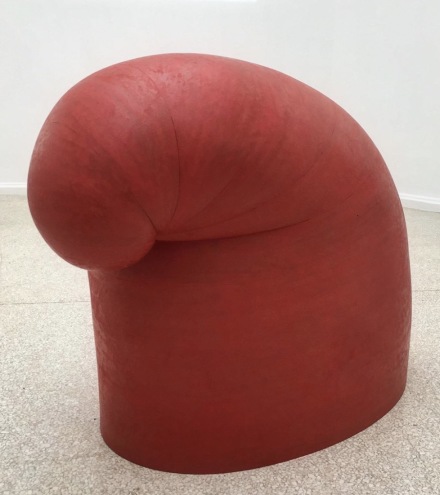
Martin Puryear at the US Pavilion, via Art Observed
Over at the Arsenale, a number of other national pavilions were also presenting work. At the Italian Pavilion, artists Enrico David, Chiara Fumai, and Liliana Moro were on view, continuing the pavilion’s recent history of three-artist shows, to impressive effect. Fumai’s work dotted the walls of the space, creating networks of cluttered materiality and strange systems of meaning that left the artist’s work as a sort of map without a meaning, a conversation with other works that seemed to emphasize its inability to offer pointed commentary, while Moro’s bound mattresses and small hole in one wall further complicated the curatorial prompt, exploring and deconstructing the concept of the labyrinth. At the Irish Pavilion, artist Eva Rothschild was also commanding early praise, with a body of vivid, colorful sculptures that made for a striking counterpoint with works elsewhere in the Arsenale’s many rooms.
There’s plenty more to see over the course of the next few days, and countless pavilions to explore both inside and outside the grounds of the Biennale. The exhibitions open to the public Saturday, May 10th.
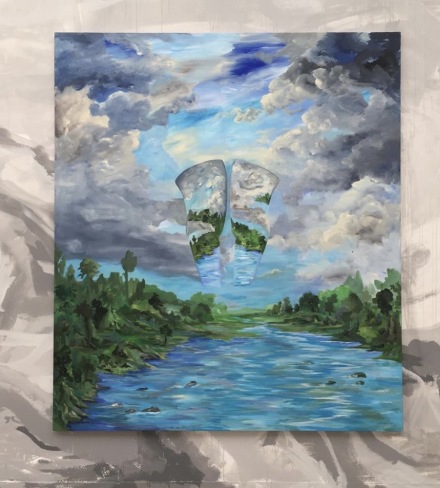
Djordje Ozobolt at Serbian Pavilion, via Art Observed
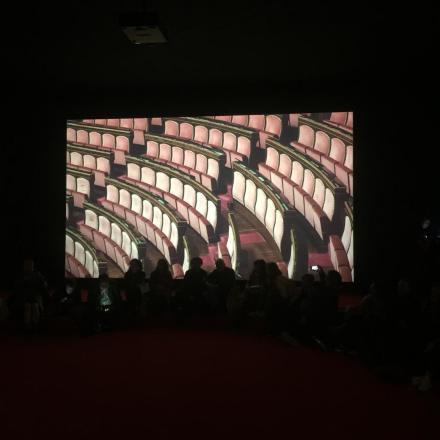
Angelica Mesiti at the Australian Pavilion, via Art Observed
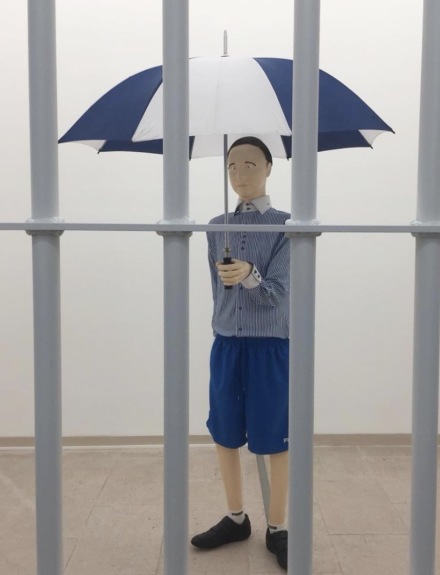
Jos de Gruyter and Harald Thys at The Belgian Pavilion, via Art Observed
— D. Creahan
Read more:
Venice Biennale [Exhibition Site]



